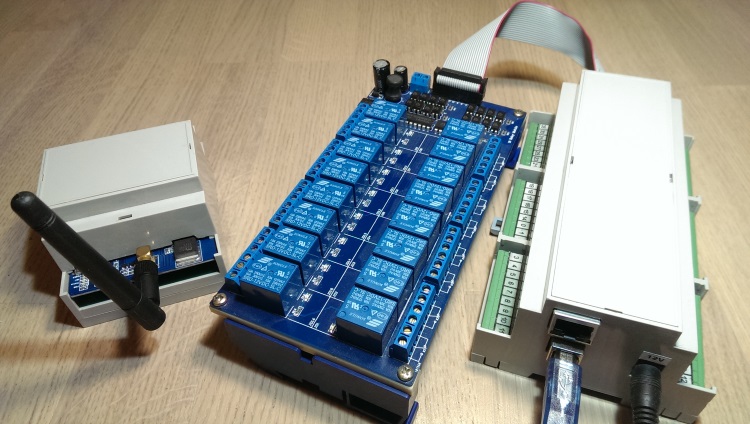Feb 18, 2021 Fuzzy AI. This is a prolog-like programming language based on the fuzzy logic. It includes the class- libraries for fuzzy logic, probability theory and method of resolution, all made in C. Java releases possible in the future. Fuzzy control is based on fuzzy logic. A logical system that is much closer in spirit to human thinking and natural language than traditional. Genetic Algorithm: An Authentic tool for Agriculture Business System implemented by MATLAB. The study of agricultural system is most extreme vital for India being the place that is known for farming.
You can generate code for evaluating a fuzzy inference system using MATLAB® Coder™. For more information on generating code, see Code Generation (MATLAB Coder).
Fuzzy sets for Ada is a library providing implementations of confidence factors with the operations not, and, or, xor, +, and., classical fuzzy sets with the set-theoretic operations and the operations of the possibility theory, intuitionistic fuzzy sets with the operations on them, fuzzy logic based on the intuitionistic fuzzy sets and the possibility theory; fuzzy numbers, both integer. Fuzzylite is a free and open-source fuzzy logic control library programmed in C for multiple platforms (e.g., Windows, Linux, Mac, iOS). Jfuzzylite is the equivalent library for Java and Android platforms. Together, they are the FuzzyLite Libraries for Fuzzy Logic Control. The goal of the FuzzyLite Libraries is to easily design.


To generate code for evaluating fuzzy systems, you must first create a fuzzy inference system (FIS). Windows 2000 sp4 update rollup 2 and full version 2016. For more information, see Build Fuzzy Systems at the Command Line and Build Fuzzy Systems Using Fuzzy Logic Designer.

While this example generates code for a type-1 Mamdani fuzzy inference system, the workflow also applies to Sugeno and type-2 fuzzy systems. Mortal kombat 9 dlc characters free ps3.
Generating code using MATLAB Coder does not support fuzzy FIS objects (mamfis, sugfis, mamfistype2, sugfistype2). To generate code for evaluating fuzzy systems, you must convert your fuzzy inference system objects into homogeneous structures using the getFISCodeGenerationData function.
Embed FIS Data in Generated Code
You can embed the data for your fuzzy inference system within the generated code. Use this option if you do not want to change the FIS data after compilation.
First, create a fuzzy system, or load a fuzzy system from a .fis file. For this example, load the fuzzy system from tipper.fis.
To use this FIS for code generation, convert it to a homogeneous structure.
By default, getFISCodeGenerationData assumes that the FIS object is a type-1 system. To generate code for a type-2 system, you must indicate the system type using getFISCodeGenerationData(fisObject,'type2').
Create a function for evaluating the fuzzy system fis for a given input vector x. Within this function, you can specify options for the evalfis function using evalfisOptions.
Generate code for evaluatefis1, specifying that the fis input argument is constant. You can specify different targets for your build, such as a static library, an executable, or a MEX file. For this example, generate a MEX file.
Cara crack aktivasi windows server 2003. To verify the execution of the MEX file:
Evaluate the MEX file for one or more input values. When you call the MEX file, specify the same FIS structure that you used at compile time.
Evaluate the original FIS for the same input values using
evalfis. When evaluating usingevalfis, use the same homogeneous FIS structure.Compare the evaluation results.
The MEX file output matches the evalfis output.
Alternatively, you can embed the FIS data in the generated code by reading the FIS data from a file at code generation time. Specify a function for evaluating a fuzzy system for given input vector x. Within this function, read the FIS data from the file tipper.fis.
Generate code for evaluatefis2.
Verify the execution of the MEX file using the same input values for x. In this case, you do not have to specify the original FIS structure used at compile time.
Generate Code for Loading FIS Data at Run Time
You can generate code for evaluating a FIS that is read from a .fis file specified at run time. In this case, the FIS data is not embedded in the generated code. Specify a function for evaluating the fuzzy system defined in the specified file fileName for a given input vector x.
Define input data types for this function.
Generate code for evaluatefis3.
Verify the execution of the MEX file using the same input values for x. In this case, you specify the name of the .fis file.
Each time you run evaluatefis3, it reloads the fuzzy system from the file. For computational efficiency, you can create a function that only loads the FIS when a new file name is specified.
Generate code evaluatefis4. The input data types for this function are the same as for evaluatefis3.
Verify the execution of the MEX file using the same input values file name.
Generate Code for Single-Precision Data
The preceding examples generated code for double-precision data. To generate code for single-precision data, specify the data type of the input values as single. For example, generate code for evaluatefis2 using single-precision data.
Verify the MEX file execution, passing in single-precision input values.
See Also
Source Code Fuzzy Logic Arduino Tutorial
evalfis | getFISCodeGenerationData